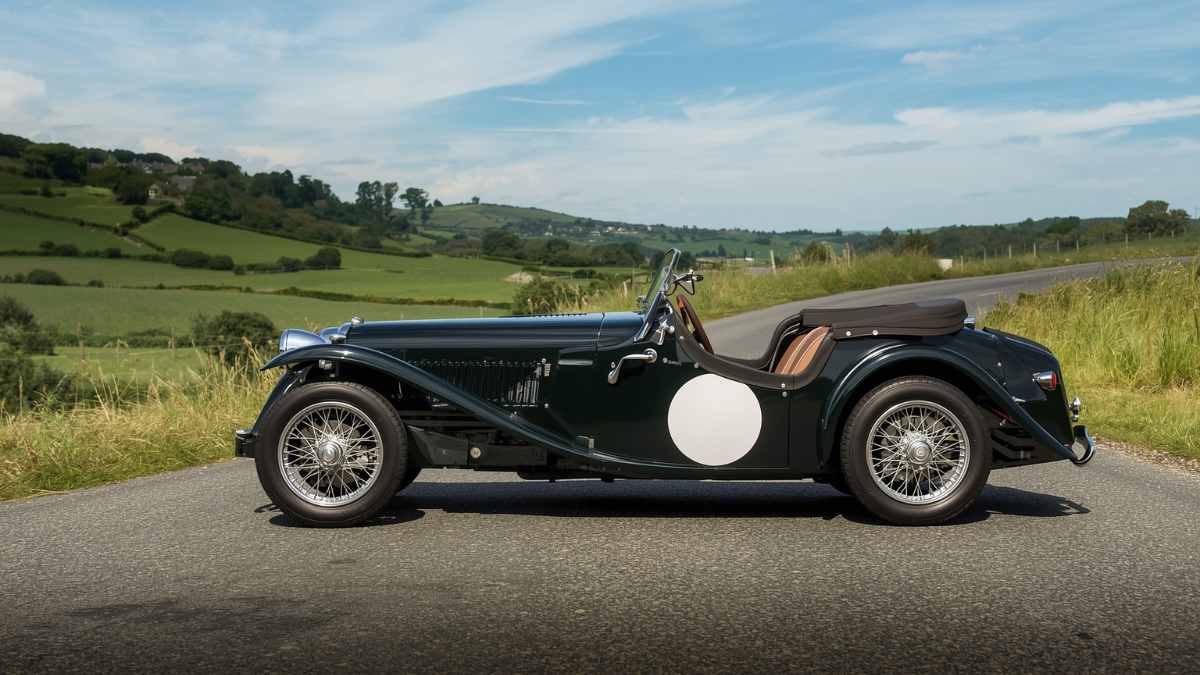Riley Imp – The Small Sports Car with a Big Legacy

The Riley Imp is one of those rare British sports cars that continue to fascinate enthusiasts long after production ceased. Introduced in the mid-1930s, the car combined compact proportions, attractive styling, and the engineering finesse for which Riley was well known. While its production numbers were small, the Imp quickly earned a reputation on road and track. Today, it is considered a true collector’s gem, representing an era when British motoring innovation was flourishing.
Origins of the Riley Imp
Riley was already a respected name in British motoring by the early 1930s. The company had built its reputation on the successful Riley Nine and various derivatives, which combined robust mechanicals with stylish coachwork. By 1933, the firm wanted to offer a smaller, lighter sports car that could appeal to younger enthusiasts at a more affordable price.
The result was the Riley Imp, introduced in 1934. Despite its modest size, it carried forward Riley’s reputation for performance and style. The Imp was effectively a short-wheelbase version of the Nine, with a specially tuned engine and body designed to emphasise sporting intent.
Design and Styling
One of the most striking things about the Riley Imp was its appearance. It featured a long bonnet, sweeping wings, and a compact two-seat body that exuded speed even at a standstill. Its flowing lines made it stand out against many of the more conservative cars of the 1930s.
Inside, the car reflected the stripped-back sporting ethos of the era. The cockpit was snug, with two bucket seats, a simple dashboard, and very little in the way of luxury. It was a car meant for driving, not for being driven in.
Engine and Performance
The heart of the Riley Imp was its 1,087 cc four-cylinder engine, derived from the Riley Nine. In standard tune, the engine produced around 50 horsepower, which may not sound impressive by modern standards but was more than adequate for such a light car.
Thanks to a kerb weight of less than 700 kg, the Imp was quick and agile. Top speeds in excess of 75 mph were possible, which was more than enough to keep up with or outpace many larger cars of the time. The free-revving engine, combined with Riley’s well-engineered gearbox, made the driving experience lively and engaging.
Chassis and Handling
The Imp sat on a short wheelbase of just 7 feet 6 inches. This gave it nimble handling characteristics, although it also meant that the ride could be a little firm. The steering was direct, and with the car’s low weight, drivers could enjoy a responsive feel that made it a delight on winding country roads.
Braking was by drum brakes on all four wheels. While not powerful by modern measures, they were effective enough for the car’s performance level. The balance of the chassis and the car’s lightness made it popular among drivers who valued agility over straight-line speed.
Competition History
Riley was no stranger to motorsport, and the Imp quickly found success on the racing circuit. The most famous competition version was the Ulster Imp, which gained notoriety for its strong showings in endurance races.
In 1934, a team of Riley Imps competed at Le Mans, where Kaye Petre and Dorothy Champney became celebrated for their spirited drive. Their Imp may not have won overall, but finishing at all in such a grueling event was an achievement in itself. These results helped cement the Imp’s reputation as a serious sports car despite its modest engine size.
The Imp also proved competitive in hill climbs, rallies, and club racing. Its lightness, nimbleness, and willingness to rev made it a favourite with amateur racers of the period.
Production Numbers and Rarity
The Riley Imp was never built in large numbers. Estimates vary, but most historians agree that fewer than 120 cars were produced between 1934 and 1935. This limited production run, combined with the car’s age, makes surviving examples very rare today.
Collectors prize the Imp not only for its scarcity but also for its blend of beauty and performance. It is a car that offers a direct connection to 1930s British motoring culture, where engineering ingenuity and adventurous styling often trumped mass production.
The Riley Imp in the Collector Market
Because of its rarity and desirability, the Riley Imp commands strong prices at auction and among private sales. Well-restored examples regularly appear at classic car auctions, where they attract both investors and enthusiasts alike.
Buyers value the Imp for its blend of compact dimensions, stylish looks, and genuine motorsport pedigree. Unlike some small sports cars of the 1930s, the Riley Imp has a documented history of competition, making it especially appealing to those who appreciate authenticity.
Driving a Riley Imp Today
For those lucky enough to own and drive a Riley Imp today, the experience is unlike modern motoring. The car feels small, light, and mechanical in a way that is deeply engaging. The steering requires more input than a modern car, the gearbox rewards careful handling, and the engine sings at higher revs.
On country roads, the car comes alive, providing the kind of raw, connected driving that has all but disappeared in modern motoring. Owners frequently remark on the joy of piloting a machine that demands skill and attention while rewarding with a truly visceral experience.
Legacy and Influence
Although the Riley Imp had only a short production life, its influence extended beyond the cars themselves. It represented Riley’s ability to innovate and produce sports cars that could punch above their weight. The Imp’s styling cues and engineering lessons carried over into later Riley sports cars, including the famous Sprite and MPH models.
In a broader sense, the Imp embodies the golden era of British motoring between the wars, when small manufacturers could build cars with character, individuality, and genuine sporting ability. Its legacy continues to inspire classic car enthusiasts and serves as a reminder of what made British motoring unique.
Conclusion
The Riley Imp may have been small in size, but its impact on motoring history was significant. With its stylish bodywork, lively performance, and strong motorsport connections, the car encapsulates the best of 1930s British sports car culture. Its rarity today makes it one of the most sought-after pre-war classics, prized by collectors for both its beauty and its pedigree.
For those who seek to understand the heritage of British motoring, the Riley Imp offers an enduring symbol of innovation, style, and spirited driving. It remains a classic that continues to capture imaginations nearly a century after its debut.



